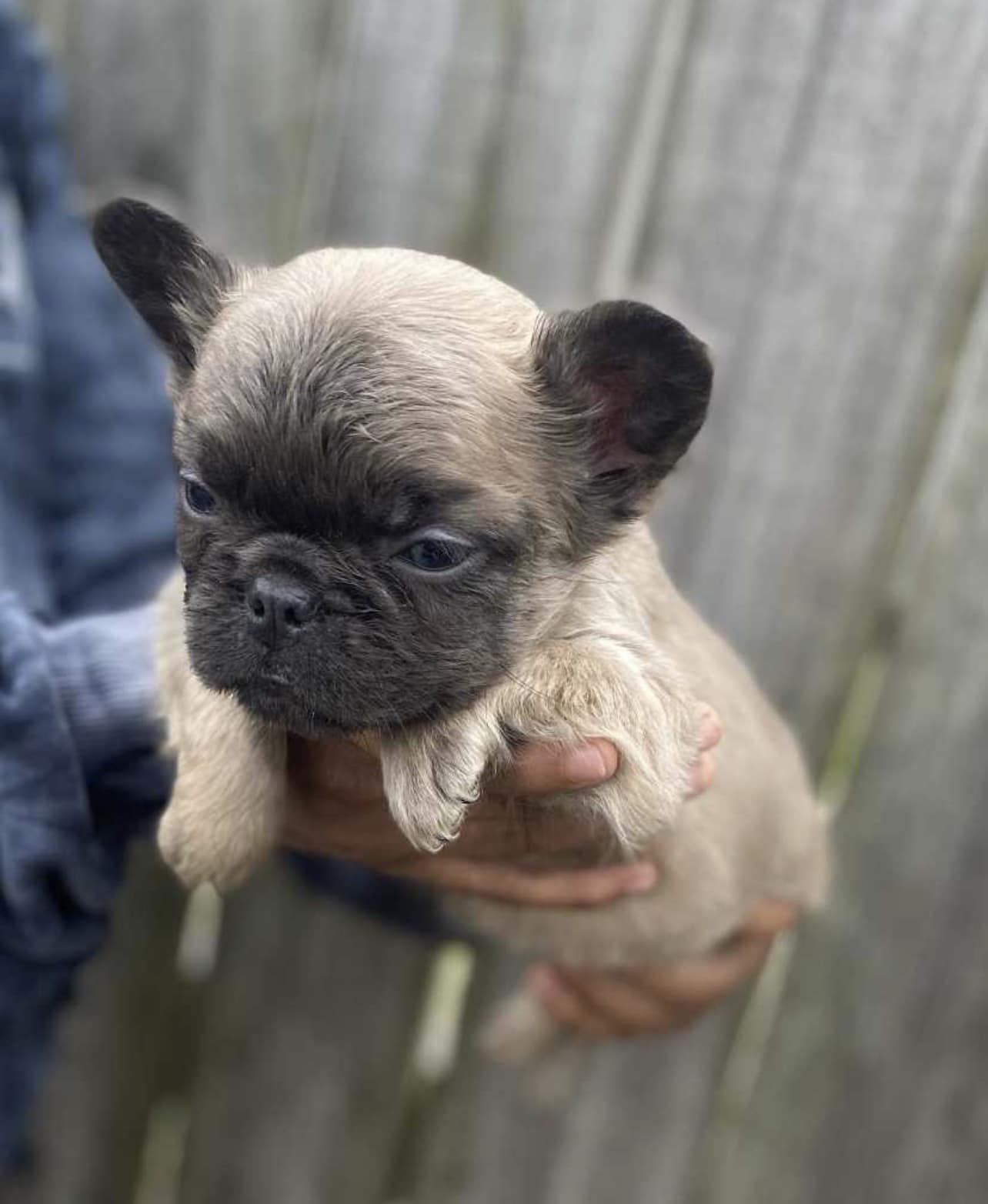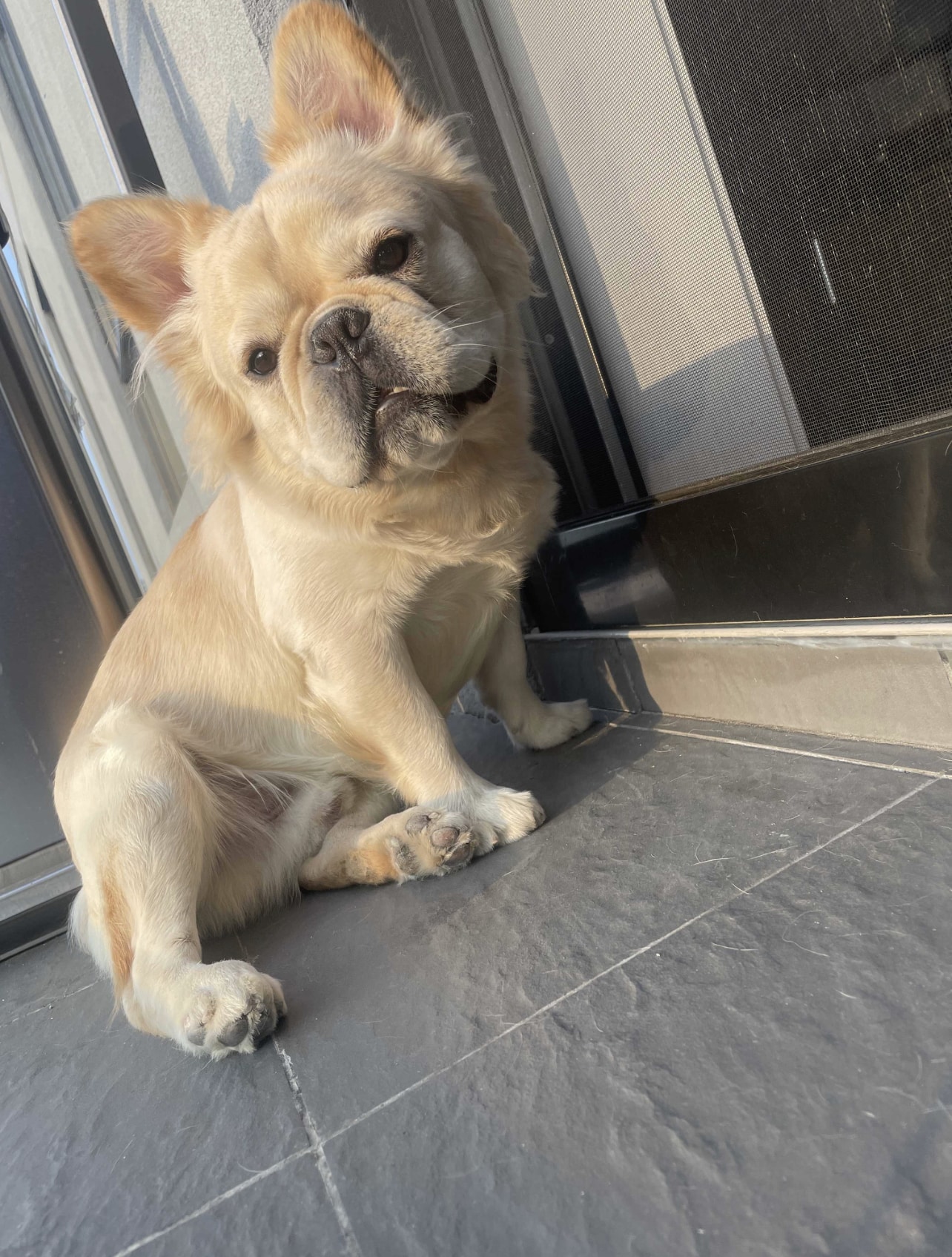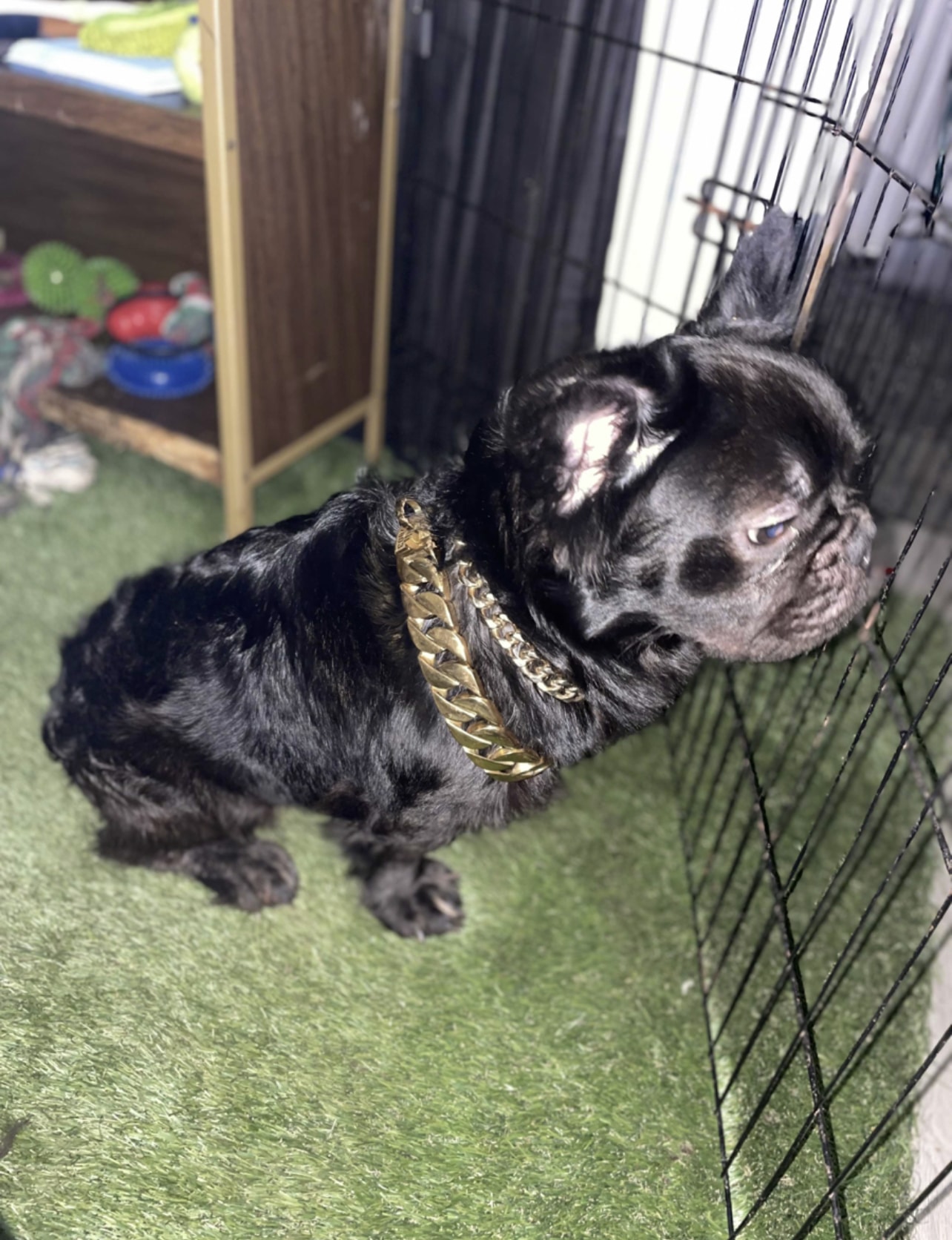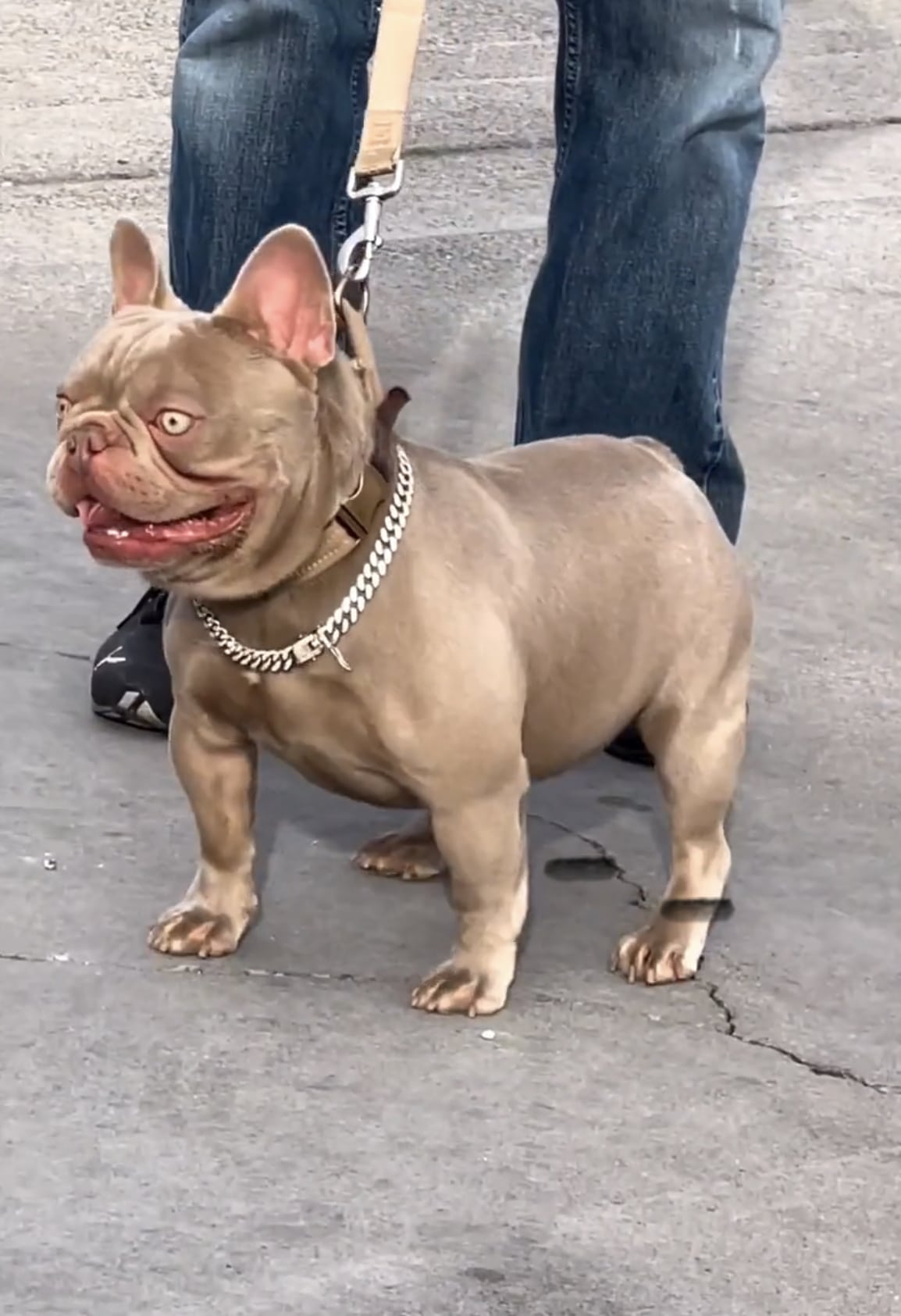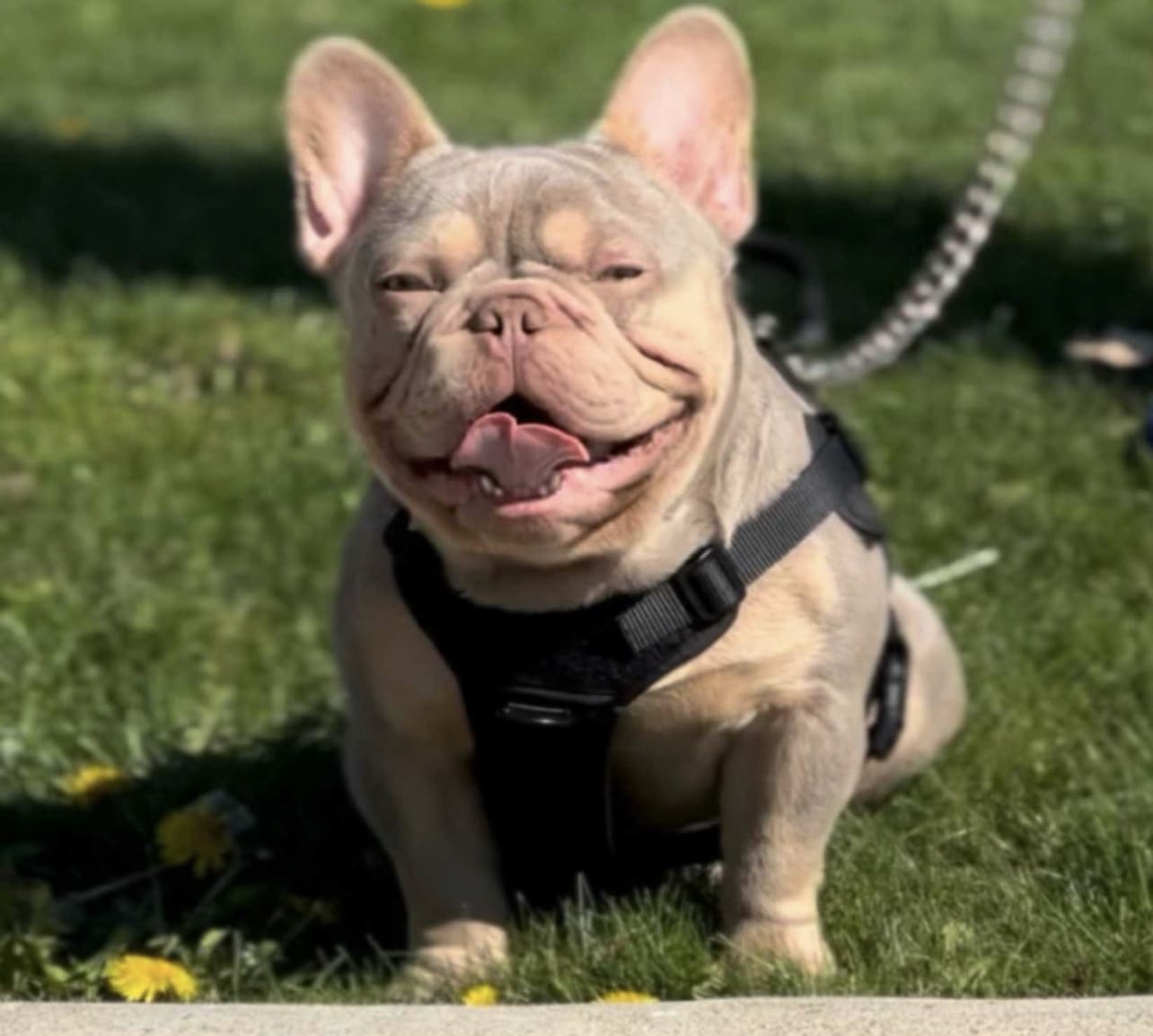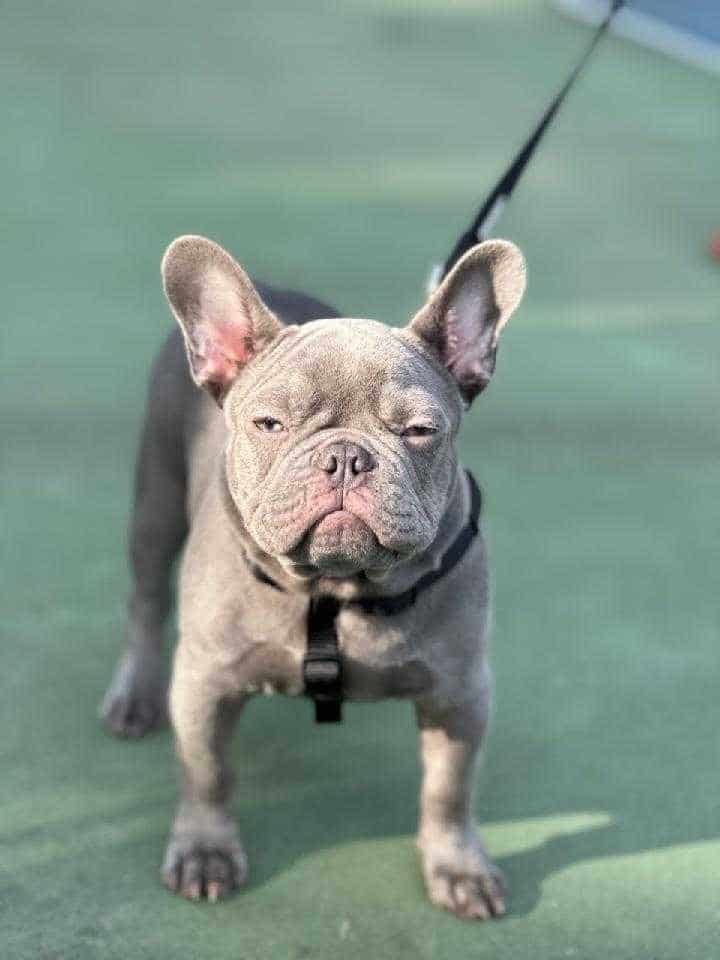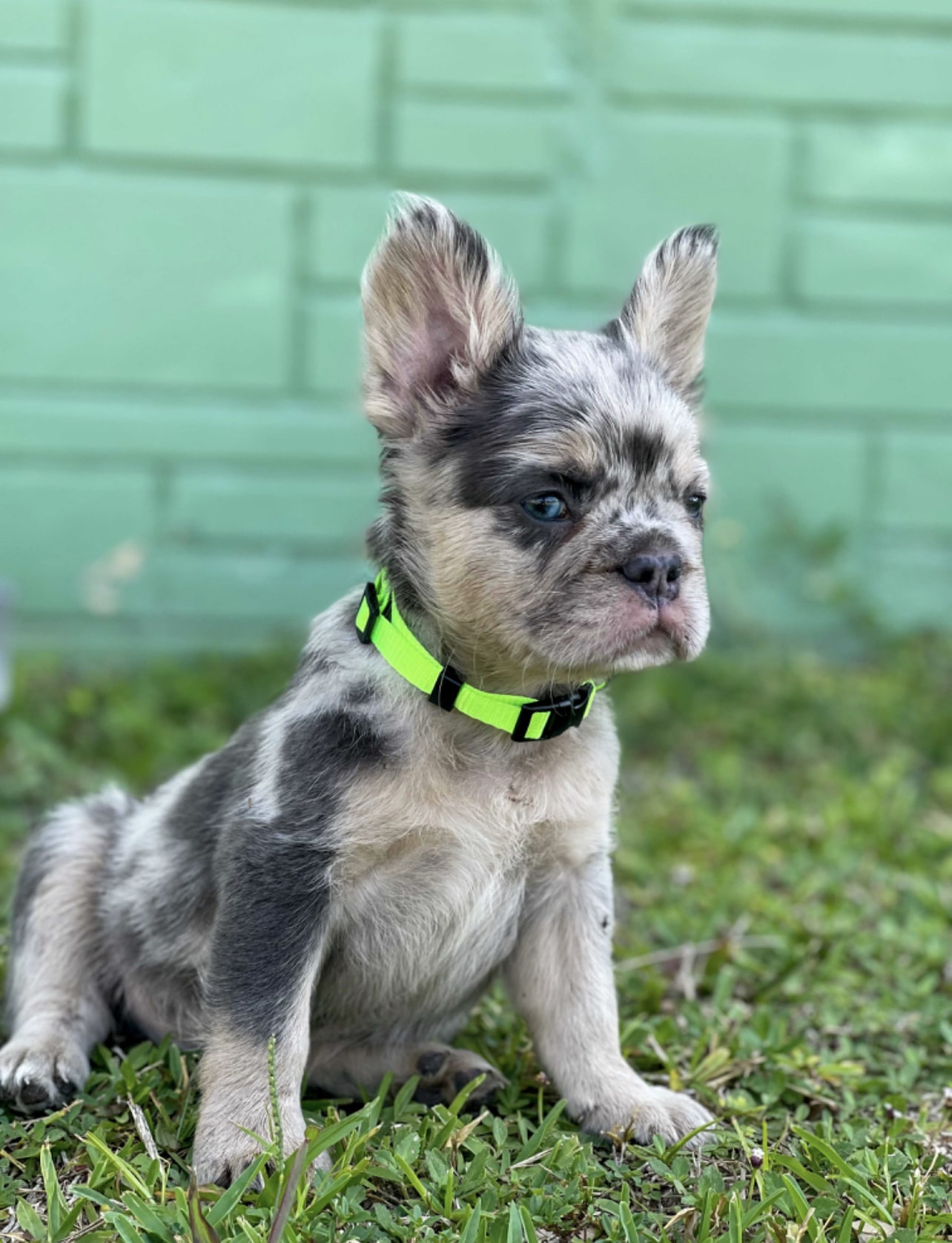My love for dogs goes back to my childhood. But one particular breed that has always caught my attention is the French Bulldog. Frenchies are famous for the diversity of their exotic coat colors. As the proud owner of a French Bulldog, I became curious as to why and how so many variety of colors exist. This guide is great for anyone looking to become a breeder and to fully understand how to create certain colors in the French Bulldog. After reading this check out our advanced color guide French Bulldog Exotic Color Ultimate Guide.
Are you curious what coat colors your Frenchie can produce? Then try our breeding coat color calculator.
Below, presented for you is an easy to understand guide on how the French Bulldog DNA works.
How French Bulldog Colors & DNA Works
The French Bulldog coat can present standard colors or rare colors. Understanding the functionality of the DNA will show how breeders get the desired colored French Bulldogs when they breed.
Locus – ( An overview about DNA)
Crucial genetic information is stored in the nucleus of dog cells. Each cell in the dog contains 39 pairs of chromosomes, 39 from the mother and 39 from the father. One of these pairs identifies the Frenchie’s gender, while the others determine everything that distinguishes them. Thousands of genes make up chromosomes, encoding that Frenchie’s features.
A locus is a compartment where the alleles are stored. Genes have two alleles from each parent placed on a chromosome at specific loci. When French Bulldogs breed, each parent contributes one allele from each locus at random, giving each allele a 50% chance of being handed down to the Frenchie puppies.
The Dominant And Recessive Alleles
Dominant alleles only need one copy of that particular gene for it to be expressed on a French Bulldog. In the case of recessive alleles, you need two copies of that particular gene to be visible.
Alleles are two gene variations stored in a Locus. When Loci are combined, the Frenchie’s final coat color expression is revealed. The Locus and Allele script describes the Frenchie’s color DNA in letters. For example, a Locus and its Alleles for a blue French Bulldog are (d/d). Each of the small d’s is an Allele, and the Locus holds both Alleles together.
The Big and Small Letters
The big and small letters in the place of alleles indicate whether a Frenchie is a carrier or non-carrier of that specific color trait. If there is a big letter, that dog is not exhibiting that trait. If there are only small letters, the dog does carry that color trait.
Colors such as Blue, Cocoa, Testable Chocolate, Cream and Pied, are all from recessive genes, which means that two copies must occupy the same locus for the color to be expressed in the coat of the Frenchie.
For example, Merle and Brindle are dominant genes, which means that just one copy of that gene needs to be present for it to express in the Frenchie’s coat. However, recessive gene dogs need 2 copies of the gene in order for the color to express in their coat. For example, a Blue French Bulldog is (d/d) and a Cocoa Frenchie is (co/co). The blue hue will not be expressed in a French Bulldog’s coat if only one copy of the blue gene is present (D/d). Since Brindle is a dominant gene, breeding with a Brindle French Bulldog will most likely result in Brindle offspring.
Possible Locus types include: Co Locus, B Locus, D Locus, E Locus, S Locus, Agouti, K Locus, M Locus, L Locus, and I Locus. The K-locus, also known as the dominant black locus, Kbr is responsible for the popular brindle color French Bulldog. Another gene is the A-Locus. Ay causes the Fawn Frenchie. AT causes the the tan point or tri color Frenchie, and (a/a) solid black French Bulldogs. If a Frenchie has the Ay + At at the A- Locus, it will present the Sable French Bulldog.
French Bulldog Colors List
The Standard Colors
Standard Color Table
| Color | Explanation |
| Brindle | Black with light fawn streaks |
| Brindle & White | Predominantly brindle with white patches |
| Cream | Solid brownish white (Eggshell color) |
| Fawn | Light brown |
| Fawn & White | Predominantly fawn with white patches |
| Fawn Brindle & White | Fawn with brindle pattern and white patches |
| White | Solid white |
| White & Brindle | Predominantly white with brindle patches |
| White & Fawn | Predominantly white with fawn patches |
The Exotic/Rare Colors
Rare Colors Table
| Color/Pattern | Description | Standard/Rare |
| Blue | Grey with a bluish shine | Rare |
| Blue fawn | Light fawn with bluish coat | Rare |
| Lilac | Lighter grey with an purplish shine | Rare |
| Lilac fawn | Light fawn with lilac coat | Rare |
| Lilac sable | Same as lilac fawn with darker fur on their back | Rare |
| Platinum | White-ish to cream coat | Rare |
| Isabella | Similar to lilac with brownish shade | Rare |
| Chocolate | Light or dark chocolate brown | Rare |
| Blue Brindle | Blue with light fawn streaks | Rare |
| Blue pied | Blue with white patches | Rare |
| Merle | Pattern of darker mottled patches on lighter coat | Rare |
| Black merle | Black mottled patches | Rare |
| Blue merle | Blue mottled patches | Rare |
| Lilac merle | Lilac mottled patches | Rare |
| Tan | Pattern of fawn markings on paws, chest, cheek, eyebrows | Rare |
| Black and tan | Black with tan pattern | Rare |
| Blue and tan | Blue with tan pattern | Rare |
| Lilac and tan | Lilac with tan pattern | Rare |
| Merle and tan | Merle and tan patterns combined | Rare |
| New Shade Isabella | Coffee color | Rare |
| Pink | Caramel color | Rare |
| Koi/Husky | Pattern like a Koi fish | Rare |
| Fluffy | Long hair | Rare |
Exotic / Rare Colors List
- Blue French Bulldog
- Merle French Bulldog
- Lilac French Bulldog
- Lilac Fawn French Bulldog
- Isabella French Bulldog
- Blue French Bulldog
- Blue Fawn French Bulldog
- Chocolate French Bulldog
- Testable Chocolate French Bulldog (Rojo)
- New Shade Rojo French Bulldog (Chocolate + Testable Chocolate)
- New Shade Isabella French Bulldog
- Pink French Bulldog
- Koi/Husky French Bulldog
- Platinum French Bulldog
- Tan + any of the above color
Exotic Features
Exotic Features
- Big rope French Bulldogs
- Fluffy/Furry French Bulldogs
- Curly Hair
- Hairless
French Bulldog Colors Chart
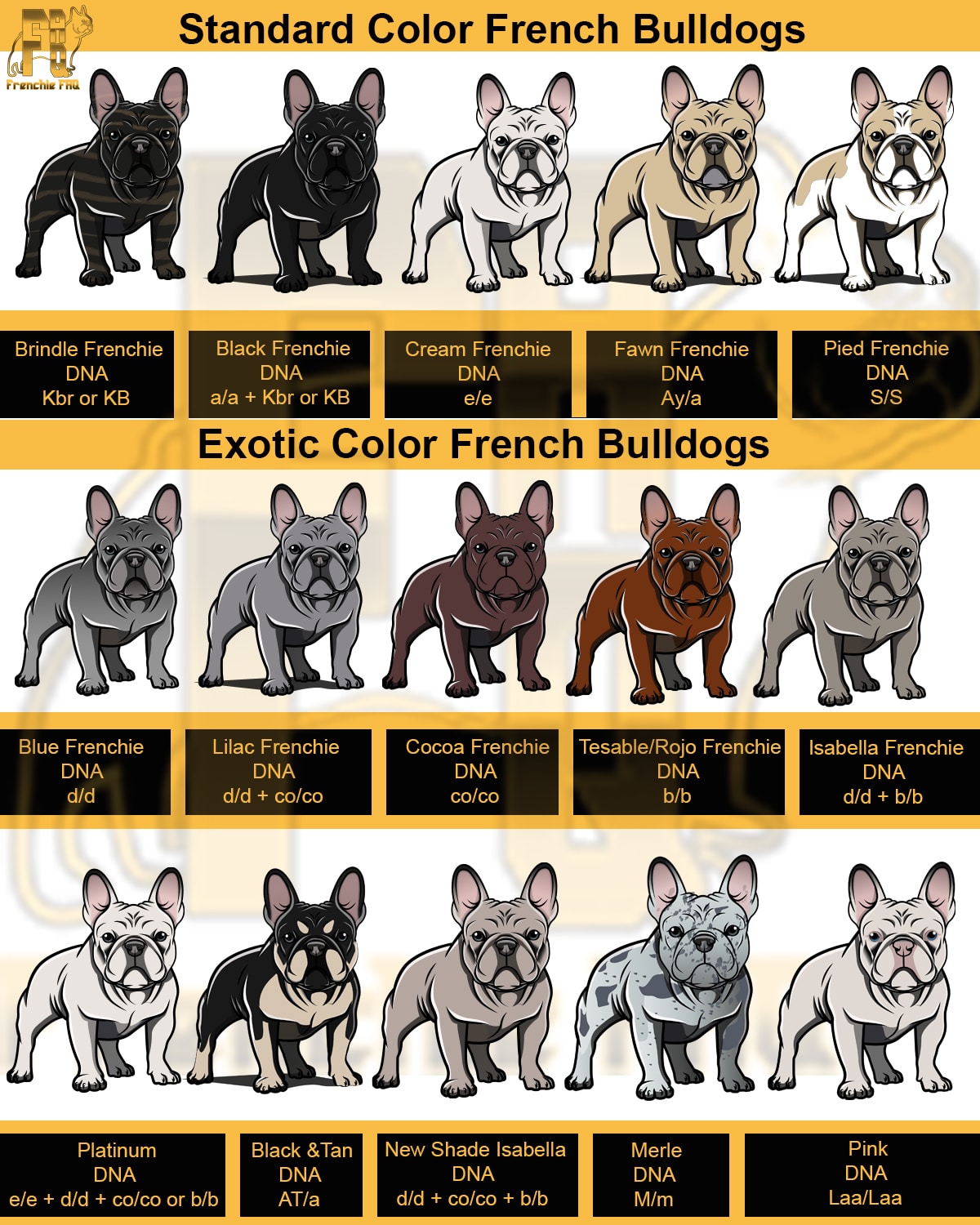
The Standard French Bulldog Colors And Patterns
Some consider standard colored Frenchies to be the only purebred French Bulldogs.
1. Brindle French Bulldog Pattern
The Brindle is expressed as stripes. The color of the stripes is determined by the different genetic loci present in the dog.
Brindle is a dominant gene that only takes one copy to manifest. Even if the Brindle does not appear on the dog, it is considered brindled if it possesses even one copy of Brindle. Some indicators are seen as KBR or K, or KB. The Brindle gene is also referred to as a “dominant black gene”.
The lack of this gene is known as KY. As a result, a dog with only one copy of the brindle gene is known as KBR/KY. KYKY is the name given to a dog with no brindle copies at all. The Brindle is classified as a Dominant Gene.
The expression is presented with a foundation coat in fawn hairs, with black hairs extending in bands to create a coat that can range from a tiger brindle, with fawn hairs predominating, to more typical dark brindles, with black hairs predominating. A unusual expression of this is a “reverse brindle” with a pale variation of fawn hairs that predominate.
2. Cream French Bulldog
The Cream color denotes that the dog has two copies of recessive genes that create the Cream color ‘e.’
The genetic code for Cream is (e/e). Many Cream-colored French Bulldogs are mistaken for light Fawns. However, the DNA of a real Cream French Bulldog differs from a light Fawn French Bulldog. A true Cream Frenchie will have a consistent tint that is slightly off-white throughout.
Cream French Bulldogs have black coloring, black noses, black eye rims, black paw pads, and black lips with no markings.
3. Piebald French Bulldog Pattern
The Piebald is a pattern, not a color, on the French Bulldog. A Pied Frenchie has a pattern of pigmented patches on a hair background that is unpigmented or white. Often Piebald is referred to as a ‘deleted gene.’ For a visibly Pied French Bulldog to be created, you’ll need two copies of the S gene (s/s). A pied Frenchie carrier, that does not have the trait evident, has only one copy of pied gene (s/n). With only one copy you normally get white spotting in the chest area of the Frenchie. Pied will appear in a variety of ways but will always remove at least half of the French Bulldog’s “actual color.”
This gene can create ‘an extreme pied’ where the color is fully gone, and the dog has no visual color. The dog will be solid white.
When Frenchies carry only one copy of the pied gene, they are mostly known as Saddle pied, Irish pied, or Blanket pied. These will have one solid color on the head, back, and chest, and then be pure white from the neck downwards.
4. Black French Bulldog
Even though these Frenchies are rare, they still fall under the “standard” category. A French Bulldog is categorized as black if the coat color is solid with the presence of Brindle. A solid color French Bulldog happens when they are (a/a) at the Agouti Locus.
5. Fawn French Bulldog
The Fawn French Bulldogs are (Ay/Ay) or (Ay/a) at the Agouti Locus. These dogs come in various shades that range from a tan color, to cream-looking ones, to extremely deep red fawn. They can express an additional exotic color that will cause the dilution effect leading to a black mask, eyes, and nose.
6. Mask French Bulldog Pattern
A mask pattern can be expressed on the dog’s face, and can be known as a melanistic mask. This mask is noted as “Em” in the genetic code at the E Locus. A dog with a visual mask requires only one copy of this gene. Certain colors, like brindle or pied, will obscure a mask. It can also be deleted by the cream gene. If you have a dog that carries 2 copy of the cream gene, that will immediately erase the mask.
The Fad Frenchie Colors and Patterns
Here is a look at the rare color French Bulldogs that recently got introduced into the gene pool. As of 2023 these colors are not qualified by the AKC to compete in the competition ring.
Rare French Bulldog Colors
1. Merle French Bulldog Pattern
The Merle French Bulldog gene expresses in a variety of colors and patterns. Merle is represented by the letter “M” in the genetic coding at the M Locus. The Merle pattern dilutes specific regions of the dog’s hue, which many find attractive. To create a visual Merle, only one copy of Merle must be present.
When two Merle French Bulldogs are bred, it can create serious health difficulties. Therefore, two Merles should never be breed together. Health concerns for the offspring of two Merle French Bulldogs include deafness, blindness, or worse.
There are no known health risks associated with the Merle gene itself. Merle dogs’ eyes frequently have a Heterochromia Iridium color variation in the iris that is a brilliant blue. This is the only gene that can create permanent blue eyes
The most famous category in the Merle is the Lilac Merle and the Chocolate Merle French Bulldog. Merle French Bulldog colors are uncommon and, as a result, more expensive.
A phantom or cryptic Merle is a dog whose coat does not visual express the Merle pattern or whose coat have very faint Merle spots. A pied dog, particularly an extreme pied, can remove all pigment from areas where Merle would be visible, effectively “hiding” it. Other than cream or pied French Bulldogs no other two dogs can be “hidden Merle.”
2. Chocolate French Bulldog
Chocolate is a recessive gene, therefore will require two copies of the Chocolate (co/co) gene to appear on the dog. The carrier of the chocolate gene is known as (Co/co). There is also a Testable Chocolate variation found at the B Locus. To be Testable Chocolate it requires two copies of the ‘b’ gene (b/b). One copy of the ‘b’ gene would be considered a carrier and shown as (B/b) on a dna test.
These dogs have a special feature that sets them apart. They have a ‘red eye glow,’ visible when a light hits their eyes giving off a bright red reflection.
3. Blue French Bulldog
A Blue French Bulldog is a result of color dilution. The signs of dilution are mostly visible on the noses, mask, ear, or paw pads. They can be easily differentiated from other Frenchies because of their dark gray blue-ish coat. Blue is a recessive gene and requires two carries of the dilute gene ‘d.’ In order for this unique color coat to show it requires two (d/d) genes to be present at the D Locus.
The Blue French Bulldog can also express different coat colors depending on the Agouti Locus. These Frenchies can express as Blue Fawns when the (d/d) gene is combined with ((Ay/a) or (Ay/Ay) or (Ay/At)).
4. Isabella French Bulldog
Isabella French Bulldog is often referred to as ‘double lilac’ or ‘true lilac.’ These dogs contain a mixture of blue or chocolate hues, and the chocolate gene is testable (b/b). This is one of the rarest color French Bulldogs and requires two recessive copies Testable Chocolate (b/b) and Dilute (d/d). These dogs have a soft, beautiful, coat.
5. Lilac French Bulldog
The Lilac color code results from two combinations of D Locus, blue (d/d) and Co locus, chocolate (co/co). It is expressed by a recessive gene requiring two copies of each. Usually, if a dog carries two copies of the ‘d’ gene, the coat will feature a purplish color. If the dog carries a tri-color, it will exhibit tan points on it’s coat.
If the dog is also (Ay/Ay) or (Ay/a) at the Agouti, it will be a lilac Fawn, which has a more yellowish champagne aspect to it than a blue fawn, which has snowier champagne look to it.
6. Tri French Bulldog
These are highly diversified. Black and Tan, Chocolate and Tan, Blue and Tan, Lilac and Tan, and Merle and Tan are just a few of the Tricolor combinations. The A-Locus Allele combination gives these canines their tan point markings.
The ‘At’ gene is primarily responsible for the dog’s tri-color look. As previously stated, the At gene predominates over the ‘a’ gene. Dogs who are (At/At) or (At/a) at the A-locus, express tan points. Apart from the dog’s tan points, the Alleles these dogs carry at the D-Locus, B-Locus, and M-Locus determine the color of their coat. If the dog does not carry two alleles of blue or chocolate, then its base color will be black and tan.
7. New Shade Isabella
The New Shade Isabella is one of the rarest color combinations. What makes it so rare is that it requires two copies of three recessive genes to express. The New Shade Isabella needs two copies from the D Locus, Co Locus, and the B Locus. The color can be described as a coffee complexion and requires (d/d),(co/co), and (b/b) to express.
French Bulldog Coat Markings
French Bulldogs are recognized for their diverse coat colors and markings that enhance their appearance and appeal. The American Kennel Club (AKC) officially recognizes several French Bulldog coat markings, including:
- Piebald: A coat with large areas of white mixed with patches of any other color that can appear anywhere on the body.
- Black mask: A distinctive black mask around the face that covers the muzzle and eyes, with the rest of the coat being any color.
- Black markings: Any black patches on the coat that can be small or large and appear anywhere on the body.
- White markings: Any white patches on the coat that can be small or large and appear anywhere on the body.
- Brindle markings: A pattern of dark stripes on a lighter background color that can vary in thickness and color.
While the AKC recognizes these markings, French Bulldogs can also have other markings that are not officially recognized by the organization, which contribute to their individuality and uniqueness.
Disqualified French Bulldog Coat Markings
Although the American Kennel Club (AKC) officially recognizes several coat markings for French Bulldogs, there are other markings that you might see on these lovable dogs. However, it’s important to note that if you plan on showing your Frenchie in AKC dog shows, they may be disqualified if they have markings that are not recognized by the organization.
One such marking is ticked, which refers to small dots or flecks of color on a white or light-colored background. This marking can give a Frenchie a unique and adorable appearance.
Another marking that is not recognized by the AKC is spotted. This marking consists of small, evenly distributed spots of color on a white or light-colored background. This marking can vary in size and shape and add to a Frenchie’s overall cuteness.
Tan points are another marking that is not officially recognized by the AKC, but you might see them on a French Bulldog. This marking refers to tan or rust-colored markings on specific areas of the body, such as the eyebrows, cheeks, legs, and under the tail. Tan points can complement a Frenchie’s coat color and add to their appeal.
Remember that while these markings are not recognized by the AKC, they can still contribute to a Frenchie’s uniqueness and charm. If you plan on showing your Frenchie in AKC dog shows, it’s essential to familiarize yourself with the organization’s recognized coat markings to ensure that your dog is eligible to compete.
AKC French Bulldog Colors:
Cream, Fawn, White, Fawn & White, Brindle, Brindle & White, Brindle Fawn; and Brindle Fawn & White
Why Doesn’t the AKC recognize all French Bulldog Colors?
The American Kennel Club (AKC) has established breed standards for French Bulldogs, which includes specific guidelines for acceptable coat colors and markings. The AKC recognizes certain colors, such as fawn, cream, and brindle, and does not recognize others, such as solid black, black and tan, or liver.
The reason for this is that the AKC’s breed standard aims to maintain the breed’s unique characteristics and traits. The AKC sets breed standards to promote the health and well-being of dogs. Certain coat colors or patterns can be associated with specific health issues or may be indicative of a dog that is not purebred. By recognizing certain colors and excluding others, the AKC aims to promote the breeding of healthy, purebred French Bulldogs that conform to the breed standard.
While some people may prefer certain coat colors or markings that are not recognized by the AKC, it’s important to prioritize the health and well-being of French Bulldogs above aesthetics. It’s also worth noting that even if a French Bulldog’s coat color or marking is not recognized by the AKC, they can still make loving and loyal pets.
What’s the most expensive French Bulldog color?
The most expensive color French Bulldogs are typically the rarest color one. New Shade Isabella’s are typically the most expensive because they carry the most recessive copies of DNA. To be a New Shade Isabella the Frenchie must carry 2 copies of Cocoa “co”, 2 copies of Dilute “d”, and 2 copies of Testable Chocolate “b”. Pink and Koi French Bulldogs can be expensive because of the rarity of these genes. Click the link to learn more about how much French Bulldog cost.
What color is My Frenchie?
Determining the precise color of your French Bulldog can be a difficult task. Typically, you can consult with the breeder to accurately identify the color of your Frenchie. However, the only way to know for sure is through genetic testing to determine the exact color of your Frenchie. It’s important to note that dogs that have been genetically tested may be more expensive than those who have not undergone testing. This is due to the added cost of testing, as well as the fact that tested dogs may have a higher level of pedigree certification, which can impact their overall value. If you have a copy of their DNA test then you can use our coat color calculator to determine what color your French Bulldog is as well as what color offsprings they can produce.
French Bulldog DNA Chart
Use the World’s 1st interactive French Bulldog DNA periodic table. Click on each Locus or any color below.
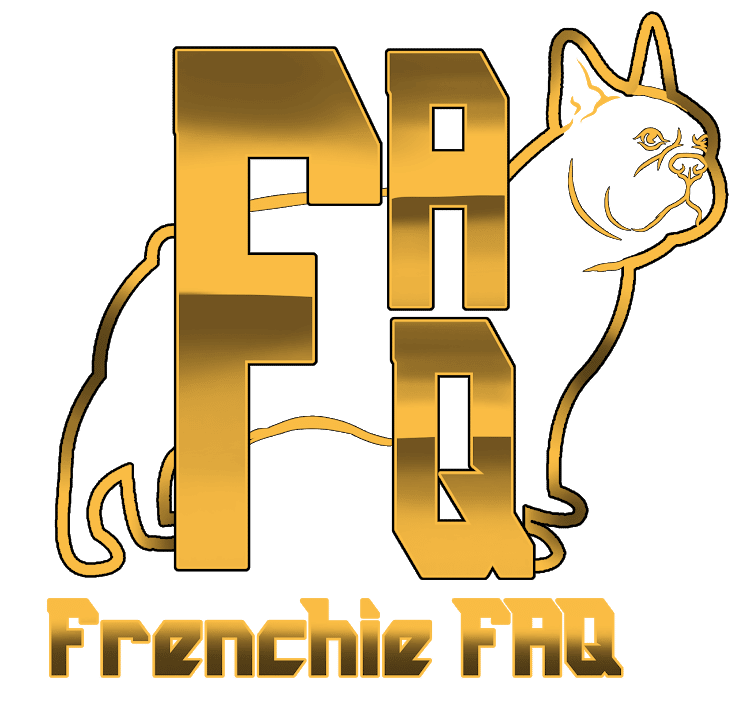
(testable)
(non-testable)
The Final Verdict
There are numerous rare French Bulldog colors that exist, but they are often costly due to their uniqueness. Breeders continue to produce new coat colors, particularly rare ones, as they can be lucrative. However, it’s important to note that some of these rare colors can be prone to health issues. Therefore, it’s crucial to conduct thorough research before purchasing a dog based solely on its color. Investing in a pricey dog that also suffers from expensive health problems is far from ideal.
Ultimately, the French Bulldog you choose to purchase depends on your personal aesthetic preferences. If you are interested in obtaining a rarer Frenchie, you should be prepared to pay a higher price and wait longer for the right dog to become available. It’s essential to prioritize the dog’s health and well-being above its appearance and rarity.
Definitely do your research before making a purchase or breeding!
If you are looking to purchase a new Frenchie then check out our Frenchie FAQ app with over 15,000 French Bulldog breeders and parents.

